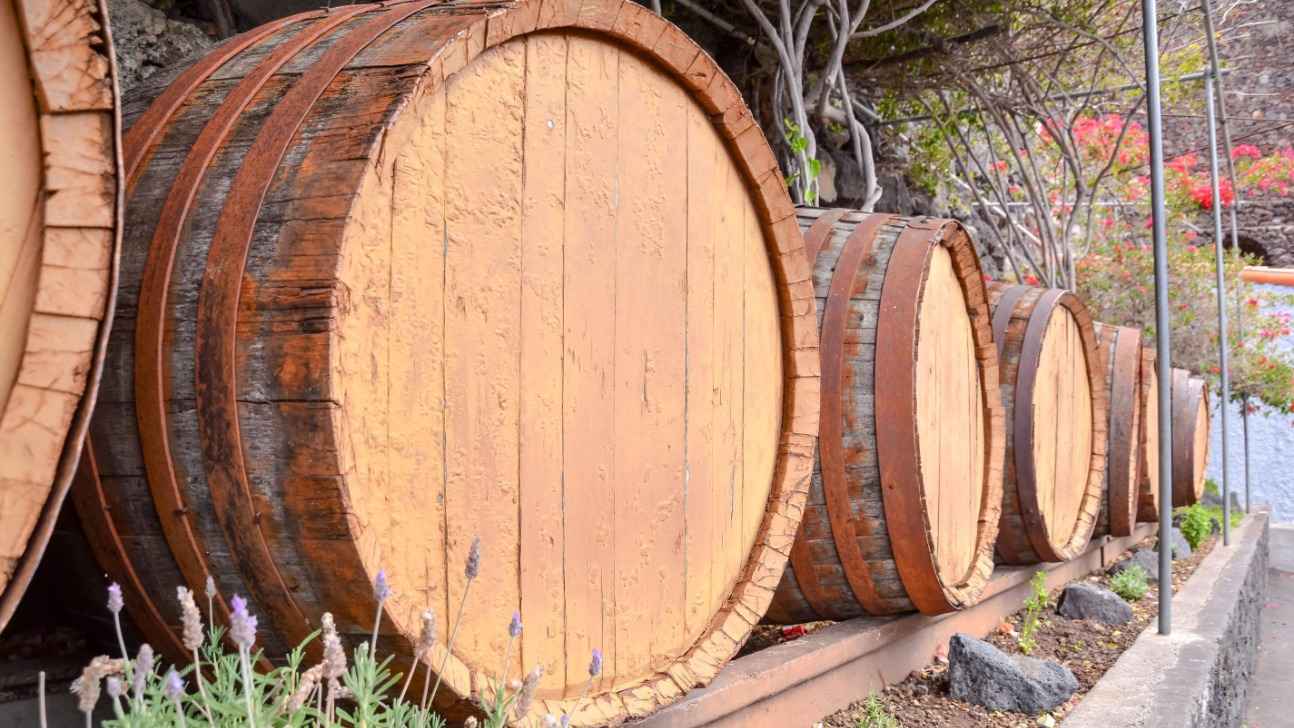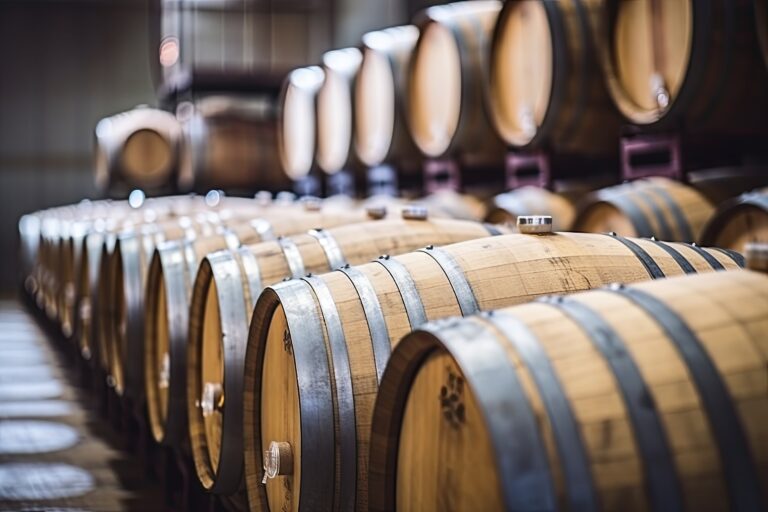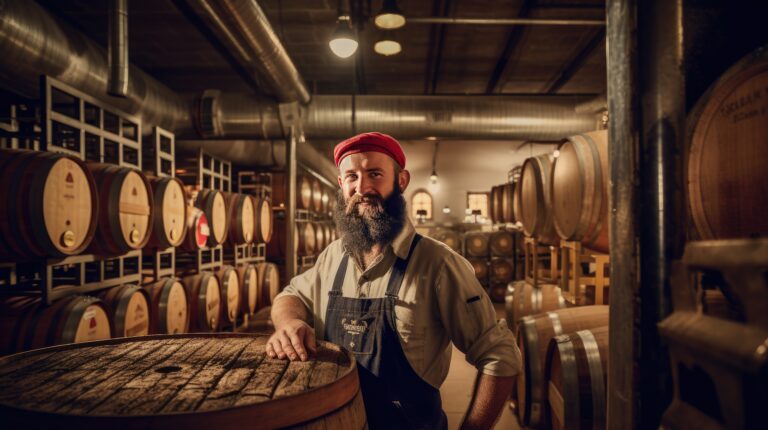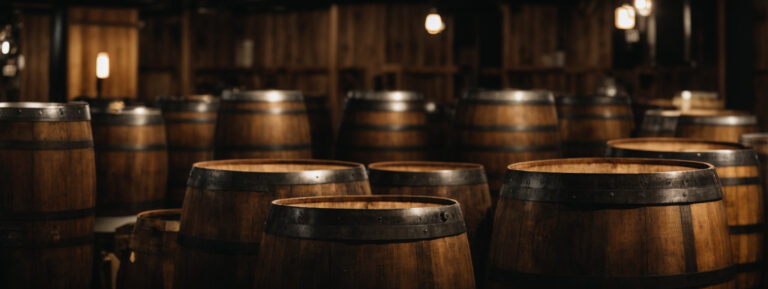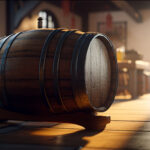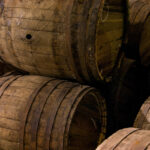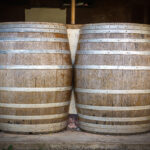Ever wondered about that dark, distinctive wood used for whiskey barrels? If you’re just starting to explore the world of whiskey, you might not realize how crucial the wood is to its flavor and aroma. The type of wood, where it comes from, how it’s treated, and how long the whiskey ages — all these things play a part in the final taste. Oak barrels have been the traditional choice for aging and mellowing whiskey for centuries, adding notes of caramel and vanilla, and of course, that beautiful color. American white oak and European oak are the most common, and bourbon has to be aged in new, charred American white oak barrels by law.
What is Whiskey Barrel Wood, Exactly?
Whiskey barrel wood comes from oak barrels that have already been used to age bourbon or whiskey. Once the distillers are finished, the wood is retired from barrel-making. This wood has a rich history, and it gives off a lovely amber color and a vanilla-like scent. The barrels are taken apart into staves—those long, narrow pieces of wood that make up the barrel. Then, these staves are repurposed into things like flooring, paneling, furniture, and other decorative items. The wood soaks up the whiskey flavors as it ages, giving it a sought-after robust and smoky character. The longer the whiskey ages in the barrel, the more flavor the wood absorbs. Wood from barrels used for 10 to 30 years is especially prized. Whiskey barrel wood does need some special care. It has to be sealed properly to keep it from drying out and to stop the whiskey aroma from fading. With the right sealant and a little re-coating now and then, this unique wood can last for decades. If you’re after a rustic and truly one-of-a-kind material for your home, whiskey barrel wood is a fantastic choice. It’s not just about the history; every single piece has a story to tell. This wood can turn any space into a warm and inviting retreat, radiating craftsmanship.
The Different Oaks Used for Whiskey Barrels
Two main types of oak are used to make whiskey barrels: American white oak and European oak.
American White Oak
American white oak is the most popular choice for bourbon barrels. It adds vanilla and coconut flavors. This type of oak mainly grows in the eastern U.S. and the Midwest. The staves are cut to form the barrel.
European Oak
European oak, for example, French oak, is often used to age wine, sherry, and scotch. It offers more subtle spice and nutty flavors. European oak is usually denser, so barrels made from it tend to last longer. Some distillers use wine barrels that have been rejuvenated to age their whiskey. Whether it’s American or European, oak barrels enrich the whiskey as it ages, mellowing and enhancing the flavors through a natural interaction between the wood and the spirit. The result is a smooth, complex taste that’s a hallmark of whiskey aged in charred oak barrels.
Why Oak is Perfect for Whiskey Barrels
Oak has been the preferred wood for aging whiskey for centuries. Here’s why oak, and specifically American white oak, is so well-suited:
- Watertight but Breathable: Oak is watertight, but it still allows a little evaporation. This controlled interaction with oxygen is key to aging whiskey.
- Flavorful: Oak barrels add desirable flavors to the whiskey, like vanilla, caramel, and spice. The whiskey absorbs these flavors from the wood over years of aging.
- Porous: Oak is porous enough to let the whiskey breathe, while still containing it. This controlled oxidation and evaporation help the whiskey develop its complex flavors and aromas.
- Reusable: Oak barrels can be used again. After their first use, they’re often used to age other spirits like rum, brandy, or port. Reusing barrels adds layers of flavor to the whiskey.
- Plentiful and Affordable: Oak forests provide a consistent supply of wood for making barrels.
- Durable: Oak barrels are durable and can last a long time. They can last for 50 to 100 years with the right care. This longevity is essential for aging whiskeys for many years.
Basically, oak barrels have the perfect qualities for aging whiskey — they’re watertight yet breathable, they add wonderful flavors and aromas, they can be reused, and they’re long-lasting. Centuries of whiskey-making tradition can’t be wrong!
The Seasoning of Whiskey Barrels
After a barrel is made, it goes through a process called seasoning before it can be used for whiskey. Seasoning means filling the barrel with water and letting it sit for several weeks. The water makes the wood swell, which seals up any small cracks or leaks. It also helps the barrel keep its shape better over time. After a few weeks, the barrel is emptied and allowed to dry completely. This expansion and contraction of the wood helps release compounds from the oak that will give the whiskey its flavor. The barrel might be filled and emptied several times before it’s considered properly seasoned. Some distillers also char the inside of the barrel during seasoning. The charring caramelizes the natural sugars in the wood and gives the whiskey a smoky, toasted flavor. The level of char can vary from a light toast to a deep char, depending on what the distiller wants. Once it’s seasoned, the barrel is ready to be filled with the distilled spirit and aged. The aging process, along with the flavors it gets from the oak, is what turns the clear spirit into rich, amber whiskey. Using good oak barrels and seasoning them properly is crucial for making a premium aged spirit.
How Long Different Whiskeys Age in Barrels
Whiskey gets its distinct flavor and amber color from the barrels it’s aged in, usually charred white oak. The type of wood, the size of the barrel, and how long it ages all affect the final product.
Bourbon
Bourbon whiskey has to be aged in new, charred oak barrels. The law says it has to be aged for at least two years, but most are aged for three to five years to get the ideal balance of flavors. As it ages, bourbon takes on notes of vanilla, caramel, and spice from the wood.
Scotch
Scotch whisky is aged in used barrels, often old bourbon casks. Aging times are usually longer, from three to 30 years for single malts. The used barrels give off more subtle wood flavors that blend with the natural flavors of the malted barley. As scotch ages, it develops dried fruit and nutty flavors, along with smoke or peat.
Irish Whiskey
Irish whiskey is usually aged in used bourbon barrels for at least three years. It tends to be lighter and smoother than scotch or bourbon. When aged for more than five years, Irish whiskey picks up flavors of toffee, honey, and sherry from the wood.
Rye
Rye whiskey has to contain at least 51% rye grain and be aged in new charred oak barrels. Rye is aged for at least two years, but often three to five. It has a spicier, drier flavor than bourbon because of the rye grain, with strong notes of cinnamon, clove, and pepper from the wood.
Ultimately, the specific type of wood, what was in the barrel before, the char level, and the aging time all work together to create the distinctive flavors of your favorite whiskey. The longer a whiskey ages, the more complex its flavor becomes. But too long, and it can become too woody. It’s all about finding the right balance.
What Happens to the Wood During Aging
As whiskey ages in charred oak barrels, the wood interacts with the spirit in several important ways:
- Extraction: Compounds from the wood are extracted into the whiskey, adding flavor and color. Vanillin gives it a vanilla aroma, while tannins add bitterness and astringency. Lignins break down into smoky phenolic compounds.
- Oxidation: Oxygen enters the barrel through the wood, causing the whiskey to oxidize. This mellows the flavor, reduces bitterness, and creates esters that give it fruity notes.
- Evaporation: Some of the whiskey evaporates through the barrel, which is called the “angel’s share.” This loss in volume concentrates the flavor and aroma compounds. The climate where the barrels are aged affects the evaporation rate and flavor development.
- Filtration: The charred wood acts as a filter, trapping impurities from the spirit. As the whiskey penetrates deeper into the wood, its color and flavor change. The inner layers of wood have a greater impact on aging.
- Blending: Whiskeys aged in different barrels are often blended before bottling to create a consistent flavor from batch to batch. The age, wood source, and aging location of the barrels all influence the final blended whiskey.
Master distillers keep a close eye on the barrels during aging to know the perfect time to bottle the whiskey. It’s a delicate balance of extracting the desired wood flavors and aromas while avoiding over-aging, which can lead to a dull, woody taste. The aging process is truly an art.
The Flavors Whiskey Barrel Wood Imparts
Aging whiskey in barrels gives it complex flavors. As the whiskey interacts with the wood, several chemical reactions happen:
- Evaporation: Some of the whiskey evaporates over time, which intensifies the flavor. This is the “angel’s share.”
- Extraction: The whiskey extracts flavor compounds from the wood, like vanilla, caramel, and cocoa. Oak barrels are commonly used because oak contains many flavorful compounds.
- Oxidation: As oxygen interacts with the whiskey through the barrel, it causes chemical changes that create nutty or sherry-like flavors.
- Char Level: How much the inside of the barrel is charred affects the flavor. Lightly charred barrels make sweeter whiskey, while heavily charred barrels lead to spicier whiskey with notes of clove or espresso.
How long the whiskey ages in the barrels and the environment where they’re aged also determine its unique flavor. Barrels aged in warmer climates have more interaction with the wood, which gives richer, darker flavors. Colder climates produce lighter, fruitier flavors. Whiskey barrel wood is essential for giving whiskey its characteristic taste and aroma. The flavors extracted from and imparted by the wood define the spirit and shape its identity. Without aging in charred oak barrels, whiskey wouldn’t have the complexity and depth of flavor that whiskey drinkers love.
Reusing Whiskey Barrels
Old whiskey barrels are often reused for aging and flavoring other spirits, and even for various wood crafts.
For Aging Spirits
Aged whiskey barrels give flavors of vanilla, caramel, and oak to other spirits like rum, tequila, or scotch. Small craft distillers often age their spirits in used bourbon barrels to create unique flavors without the expense of new oak barrels.
For Home Brewing
Home brewers often use whiskey barrels to age and flavor beers, especially stouts and porters. The wood character comes through nicely in the final beer. Some brewers even make special barrel-aged blends for more complex flavors.
Decorative Crafts
The rustic look of weathered oak whiskey barrels makes them great for decorative crafts and furniture, like bar stools, tables, planters, or keg lamps. Their worn, charred interior adds an authentic touch. Many stores now sell DIY barrel kits for making your own crafts and decorations.
Firewood and Smoking Chips
When a barrel is no longer useful for aging, the staves (wooden planks) can be used as firewood, wood chips for smoking meats, or wood shavings for barbecuing. The leftover wood still has a hint of whiskey aroma that permeates whatever you’re cooking or smoking. Whiskey barrels continue to be useful even after their first life. Whether it’s for aging other spirits, home brewing, crafts, or natural wood products, these barrels have plenty to offer. Their versatility and rustic charm enhance many parts of our lives with a touch of tradition.
Whiskey Barrel Wood FAQs
What types of whiskey are aged in barrel wood?
Almost all types of whiskey are aged in oak barrels, including bourbon, rye, scotch, and Irish whiskey.
What kinds of oak are used?
The two most common types are American white oak and European oak.
How long is whiskey aged in barrels?
Aging can take from a few years to 30 years or more for some premium whiskeys. Bourbon must be aged at least two years, single malt Scotch is often aged 3-15 years, and some premium whiskeys are aged 20 years or longer.
Do all barrels impart flavor?
Yes, oak barrels are essential for giving whiskey its distinct flavor and color. As whiskey ages, it absorbs compounds from the wood like vanilla, caramel, and tannins. The longer it’s aged, the more flavor it gets.
Can used barrels be refilled?
Barrels can usually only be used to age whiskey a few times before they lose their ability to impart flavor. Some distillers reuse barrels for other spirits like rum, tequila, or brandy, and some make barrel-aged beer. After a couple of refills, most barrels are scrapped or used for decoration.
Final Thoughts
So, there you have it – a quick overview of whiskey barrel wood. Now you can walk into any bar and sound like an expert as you discuss the merits of ex-bourbon versus ex-sherry casks. You know about the common types of barrels, why charring is important, and how the wood interacts with the whiskey during maturation to create complex flavors. Next time you order a dram of your favorite aged spirit, you can appreciate all the work that goes into making such a unique taste. It’s amazing how much goes into crafting quality whiskey! Pour yourself another glass and toast to a newfound appreciation for the simple pleasures in life.
